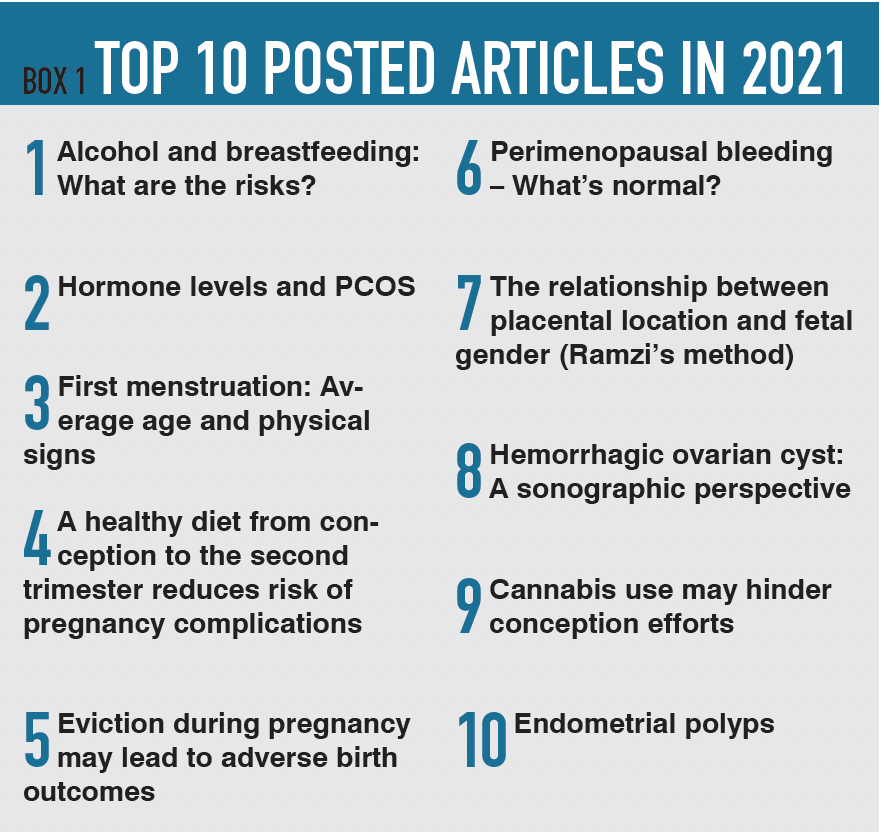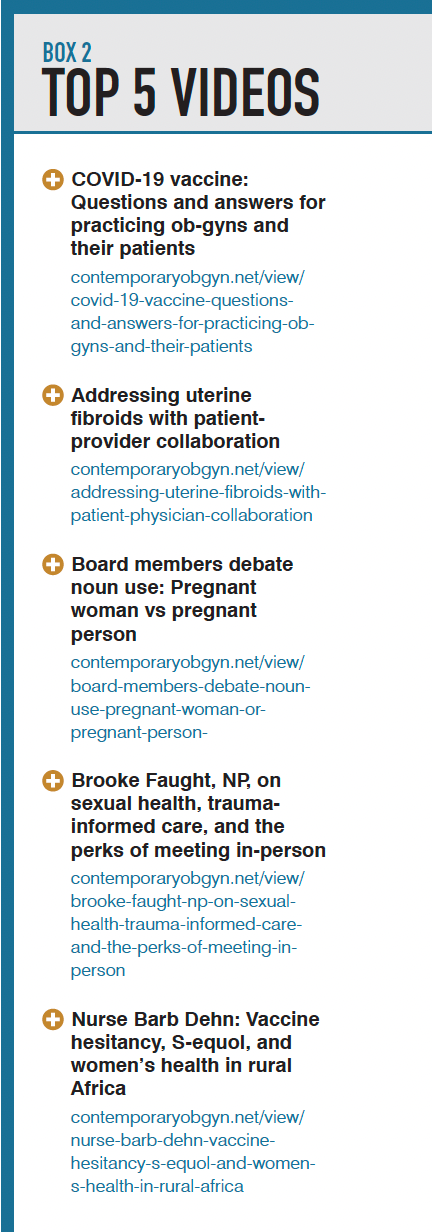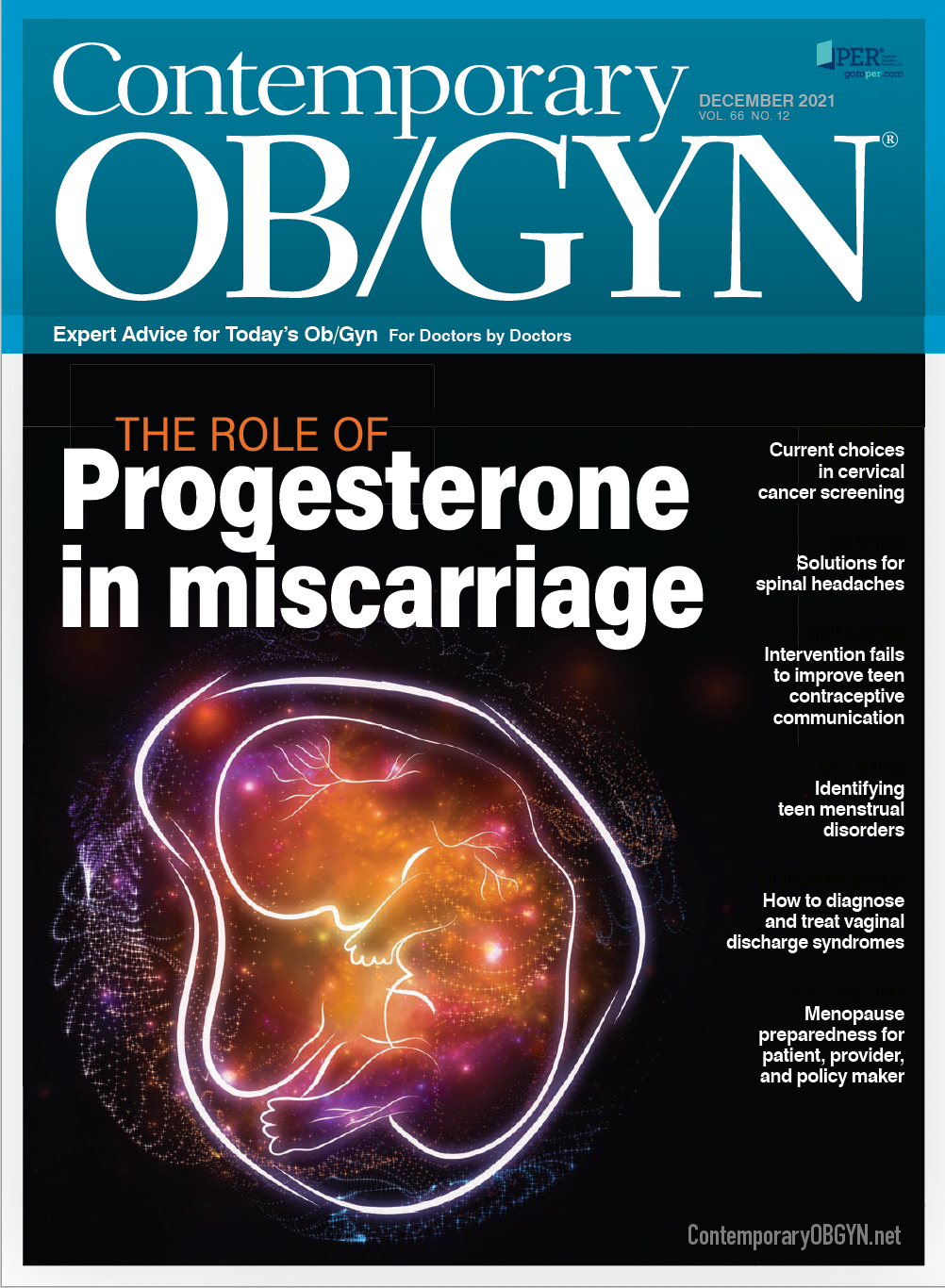2021: A year in review
Contemporary OB/GYN® has aimed to address prevalent topics for our readers, including not only areas related to the pandemic but ones we encounter day to day.
As we approach the third year of the COVID-19 pandemic, masking, vaccinations, and a “new normal” have become commonplace around the world. I am thrilled to see that the vaccines are now available for many schoolchildren, and only wish we could improve vaccine uptake among our patients.
Figure. Pageviews

Contemporary OB/GYN® has aimed to address prevalent topics for our readers, including not only areas related to the pandemic but ones we encounter day to day. This year, page views on our website have soared from last year’s numbers, with a whopping 3.4 million increase from 2020 to 2021 (Figure).
We strive to provide timely information that physicians can implement into their practice. To ensure this, Contemporary OB/GYN® has kept a watchful eye on trending areas.
Box 1. Top 10 Posted Articles in 2021

For 2021, the top 5 topics include alcohol and breastfeeding, first menstruation, diet and pregnancy, cannabis and fertility, and gestational diabetes. These are also reflected in this year’s most-read articles (some of which dating back to 2011!) (Box 1). As we monitor these topics, we will continue to refresh the content of Contemporary OB/GYN®.
Box 2. Top 5 Videos

When it comes to our in-depth video interviews, COVID-19 vaccination and the debate on noun use for our patients took center stage (Box 2). I expect we will continue to see critically ill pregnant women with COVID-19 who are unvaccinated, and it is essential that we continue to provide data for vaccination for this population.
We have pushed to deliver relevant topics to our readers and ensure a variety of reading opportunities. This is clearly reflected in the 29 peer-reviewed articles published in 2021, which we also highlighted on the website and for which we made downloadable PDFs available.
Through implementing new features to our publication, we continue to fulfill our promise of providing engaging and practical content to our audience. This includes:
- Practice Matters, a regular feature focusing on practice content to align with our wildly popular Legally Speaking feature
- Tear-outs of key and critical issues
- Curbside Consults, highlighting content from specialties that intersect with ob-gyn
- Video interviews with Contemporary OB/GYN® editorial board members to provide insight into the latest trends and pipeline updates within the specialty
Moreover, our relationship with the Society for Maternal-Fetal Medicine and the American Urogynecologic Society continues to blossom—specifically with their agreement to join the Strategic Alliance Partnership program to help bring more pertinent information to our readers.
Podcasts also have increased dramatically over the past few years, with our show, Pap Talk, earning over 4,000 listens in 2021 alone. The top 3 podcast episodes published in 2021 include:
- Surgeon’s panel: The state of robotic gynecologic surgery
- HPV and cervical cancer with Sangini Sheth, MD
- Skeletal dysplasia with David Abel, MD
Finally, we are thrilled to note that our August 2020 issue on implicit bias was a finalist for Folio’s 2021 Eddie and Ozzie Awards and received an honorable mention under the B2B Healthcare/Medical division.
This year has been a whirlwind, but one constant you can count on is Contemporary OB/GYN® continuing to bring you the latest updates in obstetrics and gynecology.
Please reach out if you have ideas for potential topics, as we welcome them with open arms. As the curtain falls on 2021, I want to thank you for your readership, expertise, and dedication to our patients. I look forward to the opportunity of advancement that 2022 brings and can’t wait to tackle it together.
All my best,
Cathy

FDA approves Visby’s test for at-home STI identification
Published: March 28th 2025 | Updated: March 28th 2025The FDA has approved Visby Medical’s at-home sexually transmitted infection test, allowing women to screen for chlamydia, gonorrhea, and trichomoniasis without a prescription.
Read More

